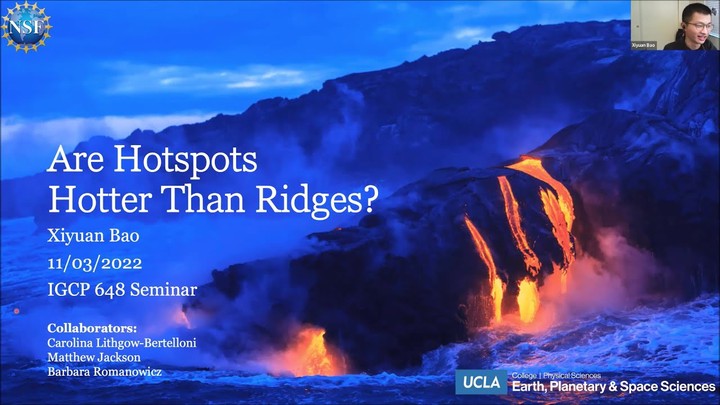Invited Talk at IGCP 648: Are hotspot hotter than ridges?

Abstract
The temperature and composition of the mantle domains sourcing hotspots and mid-ocean ridges are fundamental to understanding their origin. Primordial 3He/4He ratios in ocean island basalts (OIBs) are as high as 50 times the present atmospheric ratio (Ra) compared to 8 Ra for mid-ocean ridge basalts (MORBs). Hotspots with the highest 3He/4He ratios are also the strongest (higher buoyancy flux). Petrological thermometers of olivine in OIBs suggest a range of 100-300 °C excess potential temperature for all hotspots, not only the strongest. However, geographical coverage is limited and estimates are often inconsistent for individual hotspots. I will show our new inferences of the temperature of ridges and hotspots using a thermodynamically self-consistent velocity to temperature conversion and seismic tomography. Assuming the upper mantle and plume source are compositionally homogeneous and consist of depleted MORB mantle (DMM), we find that at least 50% oceanic hotspots (“warm” or “cold”) are not resolvably hotter than ridges, instead only “warm” or “cold” and barely above the dynamical limit for active rise in the convecting mantle. “Hot” hotspots on the other hand do indeed have higher buoyancy fluxes and high 3He/4He. These conclusions are robust even in the presence of recycled basaltic crust in the plume source. Warm and cold hotspots do not fit classical plume theory and require different explanations.
Timezone: PDT